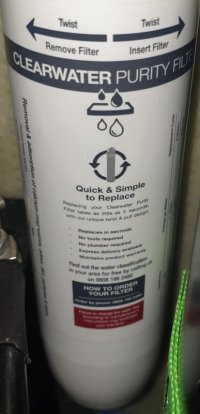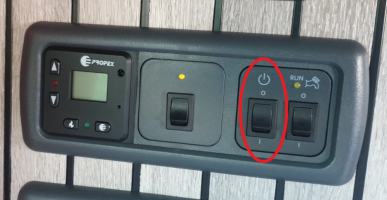Overall, I'm very pleased with my camper conversion, but, as we've used the van, we've encountered a number of niggles and irritations that we're now looking to resolve.
Number one irritation relates to the switch to turn the water boiler on and off. The switch is situated on the boiler unit itself, which sits under the floor of the wardrobe cupboard and is accessed via a trap-door at the bottom of that cupboard. This means we have to practically empty the wardrobe every time we need access to the switch - obviously far from ideal.
At handover, the convertor acknowledged the situation, saying that they had installed a remote switch for the boiler (handily positioned with all the other controls, on the outside of the wardrobe wall) but that, contrary to their expectation, the manufacturer didn't offer a boiler with the option of a remote switch. So, we have a handily positioned, redundant switch and an awkwardly positioned working switch.
Not realising how much of PITA this would be, I just accepted the [lack of a] solution, but now, I'm wondering how easy it would be to get the redundant switch to do the job it was intended to do. Obviously the switch on the boiler has to stay, as it's integral to the unit, but why can't the redundant switch be wired to control whether the boiler receives power (i.e. we leave the boiler switched permanently ON and just control the power to the boiler by switch on the side of wardrobe(?)
Is this feasible? Is it, from an electrical viewpoint, desirable?
I'd welcome your thoughts.
PS - I don't know if it makes any difference, but the boiler is only ever powered if either the inverter is switched on or if we're on EHU. If we're on hook-up, we don't care if the boiler is on all the time so don't need a handily placed switch - the issue of switching only comes in to play if we want the inverter on, but the boiler off. Hope that makes sense.
Number one irritation relates to the switch to turn the water boiler on and off. The switch is situated on the boiler unit itself, which sits under the floor of the wardrobe cupboard and is accessed via a trap-door at the bottom of that cupboard. This means we have to practically empty the wardrobe every time we need access to the switch - obviously far from ideal.
At handover, the convertor acknowledged the situation, saying that they had installed a remote switch for the boiler (handily positioned with all the other controls, on the outside of the wardrobe wall) but that, contrary to their expectation, the manufacturer didn't offer a boiler with the option of a remote switch. So, we have a handily positioned, redundant switch and an awkwardly positioned working switch.
Not realising how much of PITA this would be, I just accepted the [lack of a] solution, but now, I'm wondering how easy it would be to get the redundant switch to do the job it was intended to do. Obviously the switch on the boiler has to stay, as it's integral to the unit, but why can't the redundant switch be wired to control whether the boiler receives power (i.e. we leave the boiler switched permanently ON and just control the power to the boiler by switch on the side of wardrobe(?)
Is this feasible? Is it, from an electrical viewpoint, desirable?
I'd welcome your thoughts.
PS - I don't know if it makes any difference, but the boiler is only ever powered if either the inverter is switched on or if we're on EHU. If we're on hook-up, we don't care if the boiler is on all the time so don't need a handily placed switch - the issue of switching only comes in to play if we want the inverter on, but the boiler off. Hope that makes sense.





